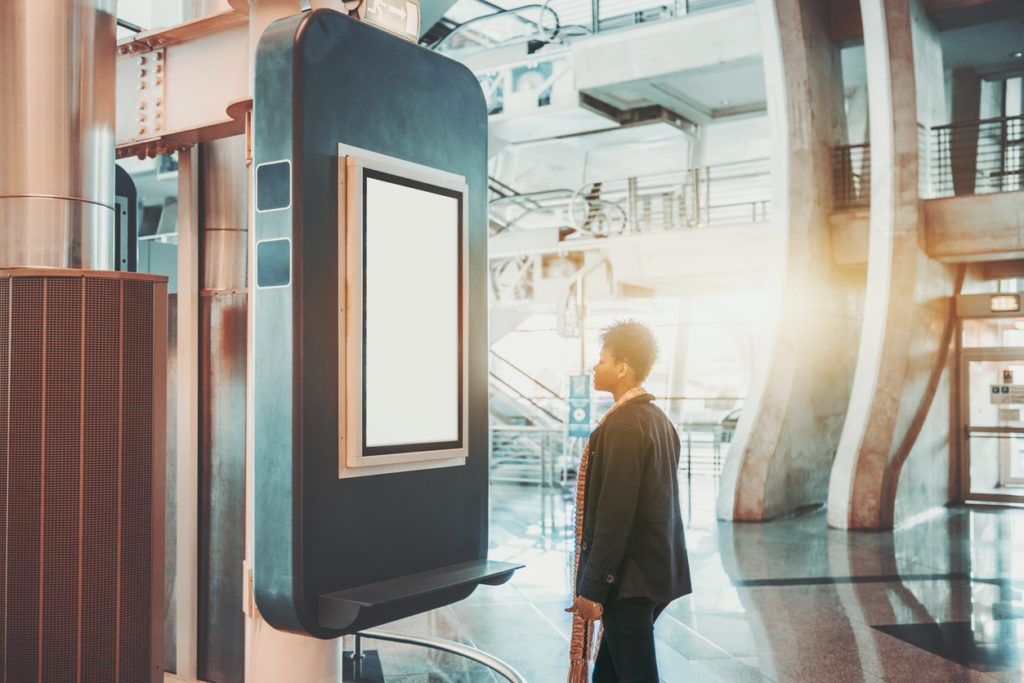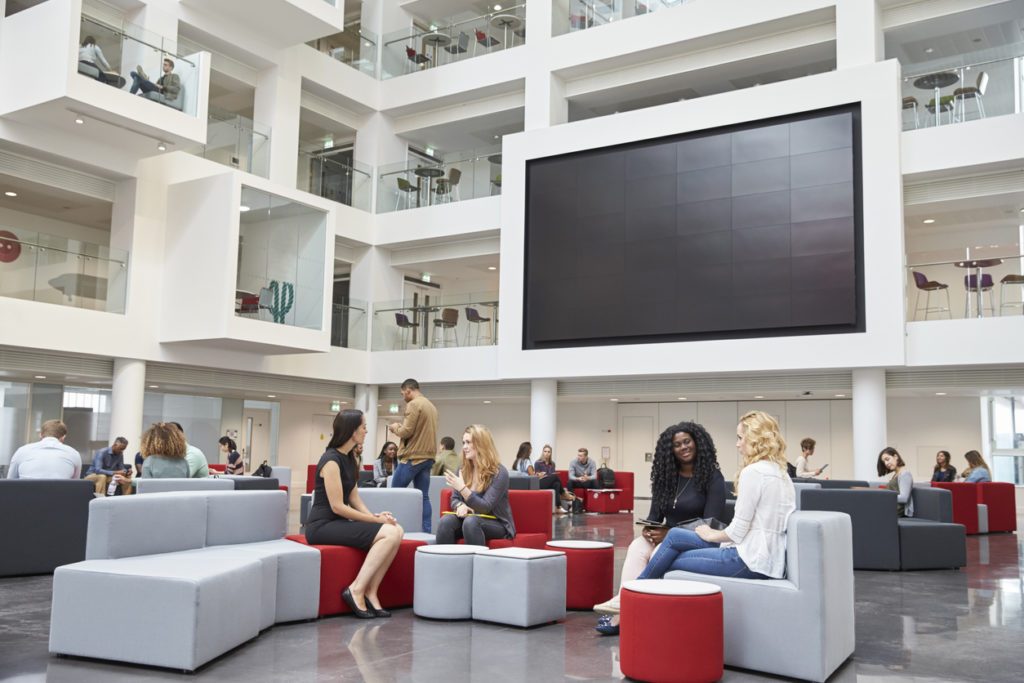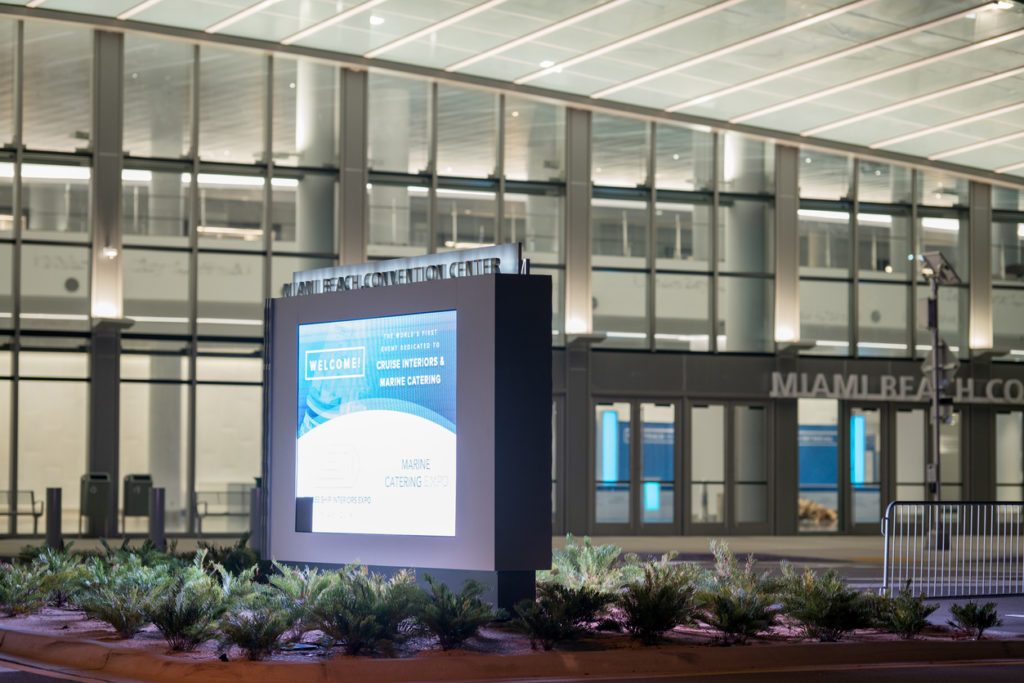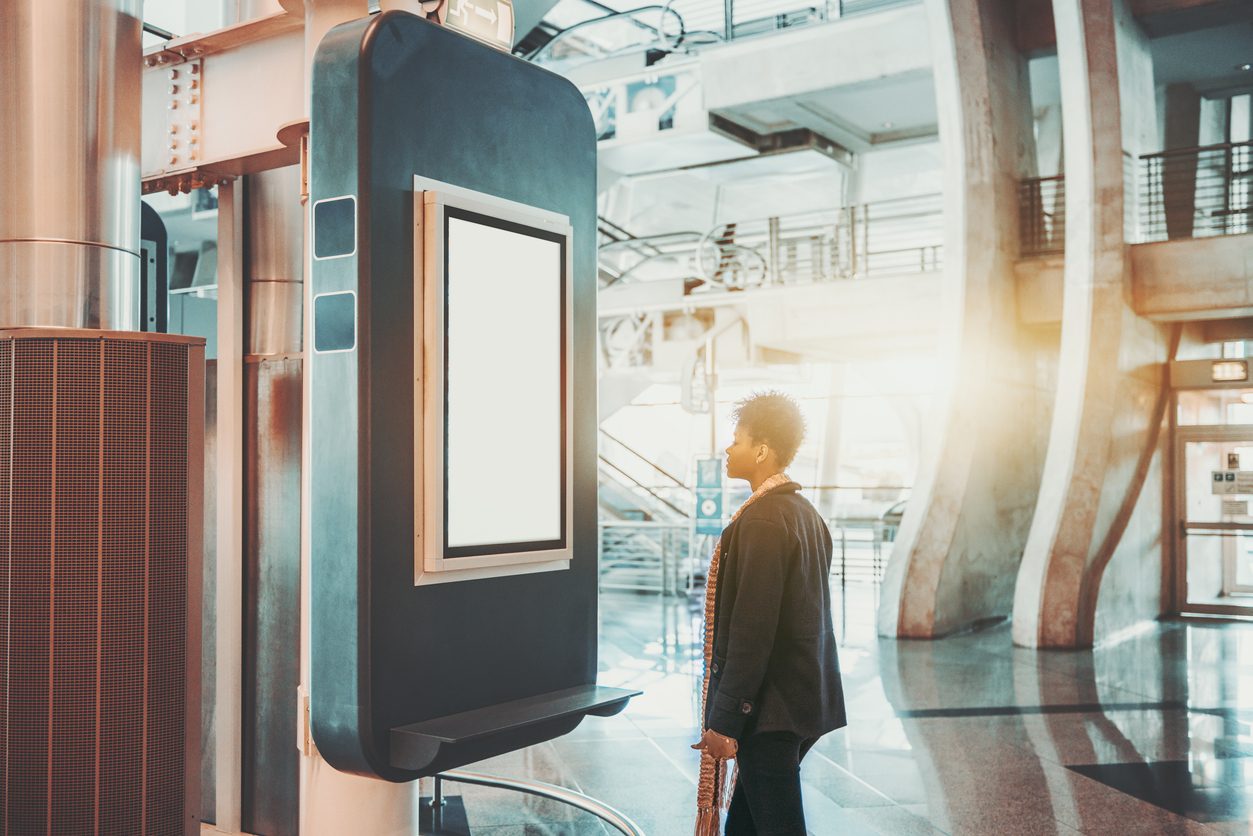What Is Digital Wayfinding?
People are increasingly turning to digital maps to navigate cities, plan their journeys, and avoid getting lost. Indeed, Google Maps has over one billion users, while rival apps like Apple Maps, Microsoft’s Bing Maps, and Citymapper improve their features to give users accurate navigational information. Once these wayfinding apps bring visitors to your door, you need an effective signage system that guides them within the building.
If you have ever gotten disoriented in a large airport, stadium, hospital, or corporate center, you know how just frustrating it is. Moreover, guests who waste a lot of time navigating your premises are less likely to return. Fortunately, digital wayfinding helps visitors find what they are searching for and plan their routes.

The Evolution of Wayfinding Signage
Ancient civilizations such as the Romans used illustrations to guide people to different businesses in cities. However, it was not until the pioneering of the automobile that the need for robust wayfinding signs in outdoor areas became apparent. Still, developers of shopping centers and office buildings did not pay much attention to signage systems.
In the 1960s, an urban planner and architect called Kevin Lynch coined the term “wayfinding” in the book “The Image of the City.” This publication resulted from a five-year analysis of how people recognize and coordinate spatial information as they travel across cities. Indeed, there was a need to connect humans with increasingly urban environments.
Traditionally, building developers used static signs like standing billboards, directional arrows secured to a wall, or a plastic sheet fixed on a backlit kiosk to provide directions. You have probably seen signs with categorical and alphabetical listings of different venues in retail stores, healthcare facilities, and other buildings. The major disadvantage of static signage is that building managers have to print new directories every time there is a change. In fact, it is common to find outdated information on static signs, which can further frustrate a visitor’s experience.
In the late 1900s to 2000s, building managers began adopting interactive digital kiosks to enhance navigation. Today, people spend a lot of time away from home and find themselves in increasingly complex environments. Thus, digital wayfinding is gradually evolving into mobile wayfinding to give users a personalized navigational experience.
Moreover, technologies like Artificial Intelligence (AI), machine learning, and Blue Dot navigation using Indoor Positioning Systems (IPS) have advanced the capabilities of digital wayfinding software.
What Is Digital Wayfinding?
Digital signage solutions are impressively flexible, as you can promote products and services, inform employees or students on campuses, and advertise restaurant menus. Likewise, you can broadcast digital directories and maps on digital signage platforms to improve the visitor experience in your facility.
A digital wayfinding solution attracts guests with attractive and interactive digital maps that simplify navigation. To leverage this revolutionary technology, you need:
1. Digital Displays

Digital screens are available in various formats, from shelf screens, digital kiosks to video walls. You can place screens outside rooms to provide information like room name, booking status, and availability. If you use standalone displays, place them in strategic locations such as entryways, lobbies, and atriums.
When choosing screen sizes, consider the kind of information you want to broadcast. For example, airports need massive displays that attract attention. In contrast, large displays may distract guests in upmarket shopping centers.
2. Wayfinding Software
You need an intuitive and scalable content management system (CMS) to bring your wayfinding content to life. Choose a digital signage software that lets you enhance maps with texts, images, or videos. Also, ensure that the solution can deploy maps to a mobile app or a web-based app. Moreover, the best platforms offer analytics on visitor behaviors and demographics. Finally, lookout for a solution with an open API to allow seamless integration with third-party applications.
3. Media Players
Media players deliver content to digital displays. Then, an internet connection is all you need to make real-time updates and schedule content. If you choose a cloud-based system, the media player simply accesses content from your databases. In contrast, other media players have storage capabilities, just like a hard drive.
4. Digital Content
Engaging content is an essential part of a digital wayfinding system. For instance, you can display turn directions, safety instructions, 3D maps, highlighted paths, and digital directories.
The Best Practices in Wayfinding Design

Effective digital wayfinding signage delivers an organized navigation experience for your visitors. Indeed, you want your wayfinding solutions to guide visitors instead of causing more confusion and delays. Thus, it is essential to consider signage design and placement and implement the best practices below:
1. Keep It Clean and Simple
The digital screens in your facility should only broadcast the information that is relevant to the location. In this way, you avoid overwhelming visitors. If you want to provide additional information, use touchscreens for guests to browse through the information they require. However, ensure that the navigational information is upfront.
2. Use Standard Icons
Recognizable icons for restrooms, elevators, exits and other common areas will help you manage foot traffic in your building.
3. Explore Color-Coded Maps
If you want to boost visitor satisfaction in your premises, color-coded maps make wayfinding memorable. However, stick to a rationale and don’t use hundreds of colors. For instance, have washrooms in one color and meeting rooms in another. Another tip is to match the colors in the building with those in the maps.
4. Consistent Branding
Establish harmony with the typography, colors, logos, and fonts on the digital wayfinding signs. In fact, you can stick to your brand’s identity colors to make the signs recognizable and enhance customer loyalty.
5. Use Visual Maps
Ensure that the wayfinding signage system is connected, so there should not be gaps in the path. The major difference between a static sign and a digital solution is that the latter provides a full visualization of the route.
Which Industries Can Use Digital Wayfinding?

Modern visitors expect digital displays when they step into your building. If you don’t have effective signage systems, your guests spend a lot of time roaming the hallways or searching through outdated static directories. Therefore, every forward-thinking business should invest in wayfinding technology to better serve the needs of their patrons. Digital wayfinding is especially popular in industries like:
1. Healthcare
Many patients arrive at the hospital stressed or sick. Then, their anxiety worsens as they struggle to find the correct room if the healthcare facility does not have adequate wayfinding signage. The result is poor patient satisfaction, long wait times, and crowded corridors. Furthermore, there are always interns and visiting doctors in large hospitals. Fortunately, interactive wayfinding solutions can assist sick patients and worried families in navigating healthcare facilities.
2. Educational Institutions
Campus digital wayfinding helps students and faculty find classes and meeting rooms and guides prospective students across the institution. For example, you can use touchscreen kiosks to deploy detailed maps to a guest’s tablet or smartphone to manage campus traffic.
3. Office Buildings
Intuitive digital maps reduce congestion in office buildings as everyone can easily find the venue they are looking for. Specifically, staff can check the availability of meeting rooms while visitors can identify their destination and download personalized routes to their mobile devices.
In Conclusion
Digital wayfinding helps visitors identify their destination and find the best route. Compared to static signs, digital solutions are easier to update, more attractive, and convenient. Moreover, interactive kiosks enhance engagement with real-time information while digital wayfinding software gathers insights on customer behavior. Ultimately, digital wayfinding will modernize your business and simplify traffic management.



